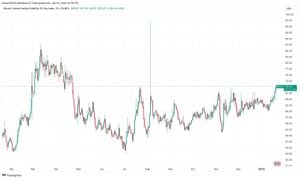The Japanese used goods market is experiencing significant growth, particularly as tourists flock to the country during the Spring Festival. This year, the allure of second-hand luxury items has captured the attention of visitors from China and Taiwan, who view these goods as both high-quality and affordable.
During the Spring Festival, popularly celebrated by millions, Japan has emerged as the preferred travel destination for many Chinese tourists. According to various reports, shopping for luxury re-use items is high on their list, sending tourists to stores like those found in Ginza, Tokyo, where second-hand items from brands like Chanel and Louis Vuitton are on display.
A Chinese tourist expressed their enthusiasm, stating, "The used Japanese products look very new and appealing. The selection is vast and relatively trustworthy, so we don't have to worry about buying fakes." This sentiment is echoed across the district, where shops report having over half of their clientele coming from neighboring countries.
Takashi Komada, manager at Brand Off Ginza, highlighted another factor behind the surge. He noted, "Japan's re-use culture has been strong for years, and the strict checks on authenticity help international customers feel safe about their purchases." His comments resonate well with tourists seeking reliable luxury brands without the accompanying price tag of newly manufactured items.
This year has seen Japan's used goods market scale new heights, projected to surpass 3 trillion yen for the first time. The luxury segment alone has grown by nearly 20% compared to last year, which shows how the global appetite for second-hand goods continues to rise.
A key element driving this market is the advanced technological solutions being utilized, particularly the role of AI technologies. Appraisers use innovative methods to confirm the authenticity of goods, which enhances consumer confidence significantly. "We use scopes to zoom and authenticate the items, ensuring our evaluations are thorough," shared one appraiser, showcasing the high-tech techniques now commonplace in Japan's used goods market.
With the exchange rate shifting favorably for foreign buyers, this trend is expected to continue. Tourists find themselves able to purchase items at lower prices due to the weakening of the yen, thereby increasing the likelihood of shopping sprees during their stay.
Notably, shoppers from Hong Kong have also commented on their experiences. One noted, "I only look at Hermes. Compared to Hong Kong, the colors and variety available are much greater," illustrating the cultural and shopping variances between regions.
By intertwining local cultural practices with modern technology, Japan has uniquely positioned itself within the global used goods market. The commitment to authenticity, coupled with cultural appreciation for re-use, creates not only consumer trust but also sets the stage for burgeoning growth.
Overall, the dynamics surrounding the Japanese used goods market, particularly amid significant tourism activity during the Spring Festival, are telling of broader trends affecting global retail. With careful cultivation and strategic trust-building measures, the market appears ready to flourish even more as it embraces international shoppers.



